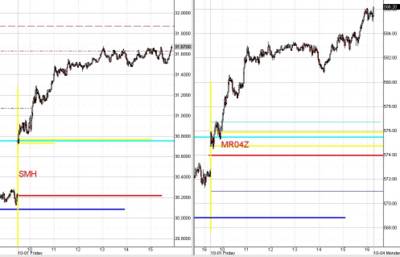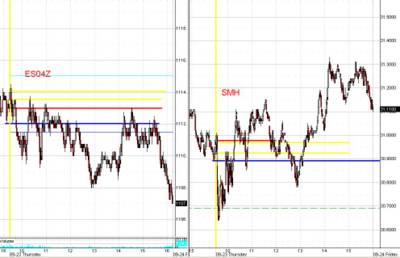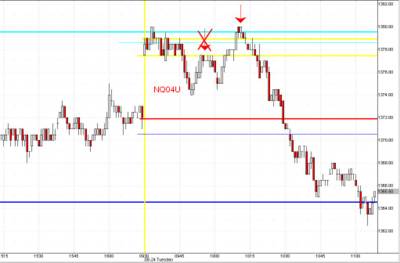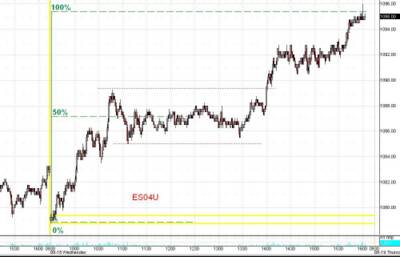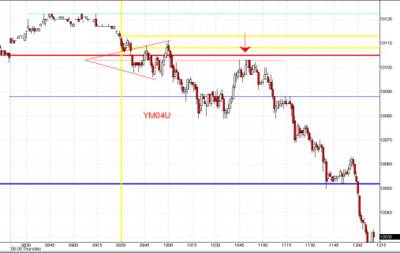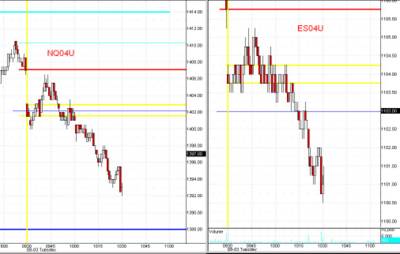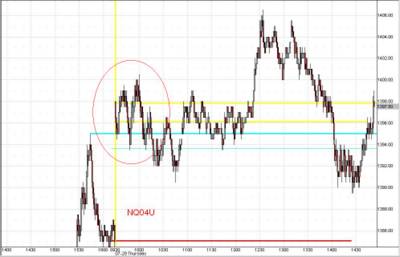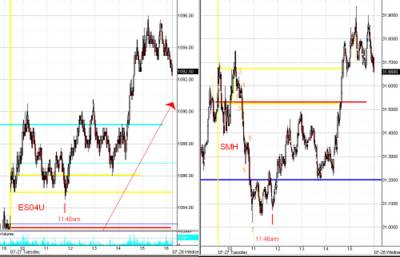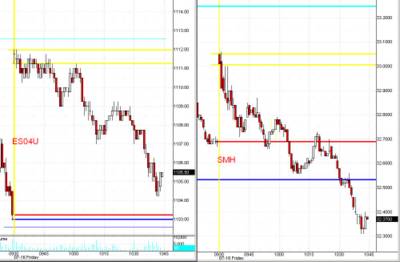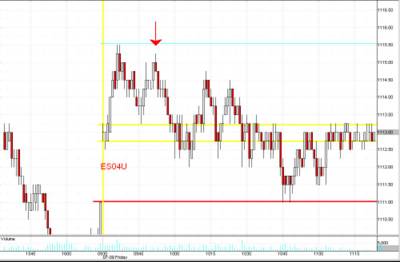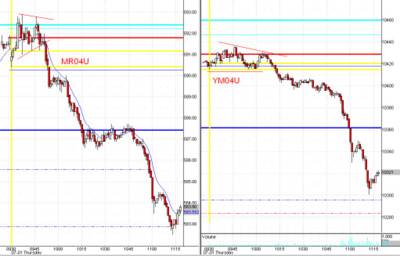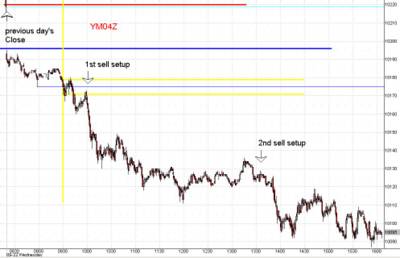
Wednesday. The psychological decision environment the trader faces each day is full of challenge. Many of these mental challenges are the same from day to day. Take the one wherein an opportunity to get on board a significant trend already seems to have slipped away before it is even recognized. Sound familiar? Very often, a daytrading trend of such significance will extend out over the entire day as a continuous trend day. On the face of it, such a day would seem to contain the best and easiest of profit opportunities, with hardly any hesitation or back pedalling throughout the day. And yet, how hard it is to quickly recognize and meet such a day with confidence in time enough to take best advantage with an early position in the right direction. Take today, for instance. Note the weekly market background description from which it sprang: more signs of growth in the economy, with yet higher stock prices pushing the psychological background into bullish euphoria. The pressure surrounding the trader not to be left behind is hard not to resist. And then the sharp gap down, catching everyone by surprise.
If you're still bullish into this gap down, the temptation to fade it for a recovery rally is strong. And if you've seen it correctly as a long awaited correction, price is already so far below the previous day's closings that the opening seems almost to far gone to participate. So what do you do? You might choose to wait for higher prices and end up missing out on the bearish trend altogether; you might try to get even with the market for doing this to you by going against the trend, trying to pick the top or bottom; or place only tentative sell orders along the way that get shaken out quickly by counter trend bull spikes until you throw your hands up in disgust at the day in exhaustion. It is only at the end of the day, looking back over it that the correct strategy now seems so simple: get in early and out via a market-on-close order.
Take the course
Pivots, Patterns and Self Recognition and learn the signals that would have gotten you short on this day shortly after the opening and then again before the big break down later in the day. A better mental decision environment awaits you...








